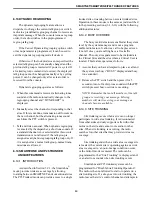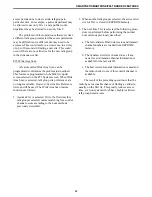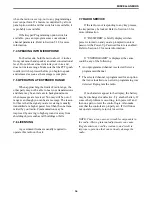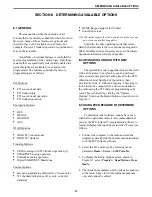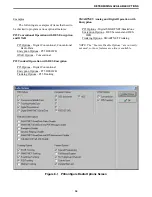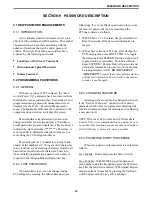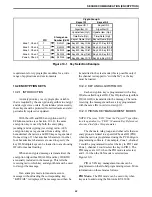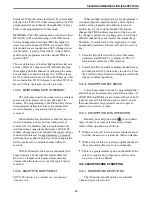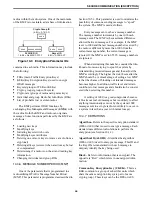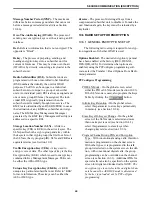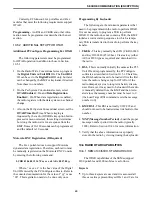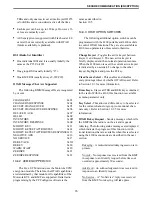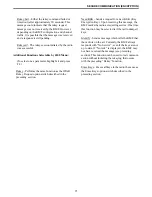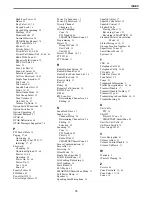
SECURE COMMUNICATION (ENCRYPTION)
64
Clear -
All calls are in the clear mode unless
responding to a secure call. If the response is then
made within the delay time (see Section 4.8.4), it
occurs in the secure mode.
Secure -
All calls are made in the selected secure
mode.
Switched -
The mode is selected by the Clear/Secure
switch. When the clear mode is selected by this
switch, “CLEAR” is flashed, and when the secure
mode is selected, “SECURE” is flashed.
If the channel has been strapped “Clear” and the
option switch selects the “Secure” mode on power up
and a transmission is attempted, “Clear Only” is
displayed and transmitting is disabled. Likewise, if the
channel is strapped “Secure” and the option switch
selects the “Clear” mode on power up and a transmis-
sion is attempted, “Secure Only” is displayed and the
transmitter is disabled.
The radio can be programmed to ignore the
“Clear” or “Secure” switch setting (“Ignore Clear/
Secure Switch When Strapped” selected on Global
screen). These preceding indications then do not occur
and transmissions always occur in the strapped mode.
NOTE: If all channels/talk groups are strapped clear
or secure and no Clear/Secure option switch or menu
parameter is programmed, this parameter must always
be selected (see following).
If the Clear/Secure switch or menu parameter are
not programmed, the radio is always in the last known
state (usually Clear) and there is no way to change it.
For example, if the last known state is Clear and this
parameter is not selected, it is never possible to
transmit a Secure message on a channel strapped
Secure because all that happens is transmitting is
disabled, an error tone sounds, and “Sec Only” is
displayed.
10.3.2 RECEIVE MODE OPTIONS
The following receive options can be
programmed with conventional operation. With
SMARTNET/SmartZone and P25 Trunked operation,
encrypted calls are received if the proper key is
programmed.
No Autodetect -
Only signals coded like the transmit
signals are received.
Secure Autodetect -
Both clear and secure signals are
automatically detected. This mode is automatically
selected if the transmit mode is switch selectable.
Proper Key Autodetect
Analog Channels
When this feature is disabled and a message is
received with the wrong key, the audio unmutes
and garbled (encrypted) audio is heard. However, if
this occurs with this feature enabled, the audio
remains muted.
Digital Channels
When this feature is enabled and a message is
received with a different key, but the key resides in
the radio, the audio is decrypted and received
normally even though the key is assigned to a
different talk group. If this feature is disabled or the
key does not reside in the radio, the audio remains
muted.
10.3.3 TALK GROUP ENCRYPTION OVERRIDE
On conventional digital (P25) channels, the
encryption strapping mode and PID are programmed
on a per talk group basis similar to the trunked modes
(SMARTNET/SmartZone/P25 Trunked). However,
with this mode only, there is the option to override the
talk group encryption programming and program it on
a per channel basis. Therefore, if desired on conven-
tional digital channels, encryption can be programmed
differently for each channel. Conventional analog
channel encryption is always programmed on a per
channel basis.
10.4 OTAR (OVER-THE-AIR REKEYING)
10.4.1 INTRODUCTION
OTAR stands for “Over-The Air-Rekeying”. This
is the process of sending encryption keys and related
key management messages over-the-air to specific
radios. The advantage of OTAR is that it allows these
keys to be quickly and conveniently updated when

